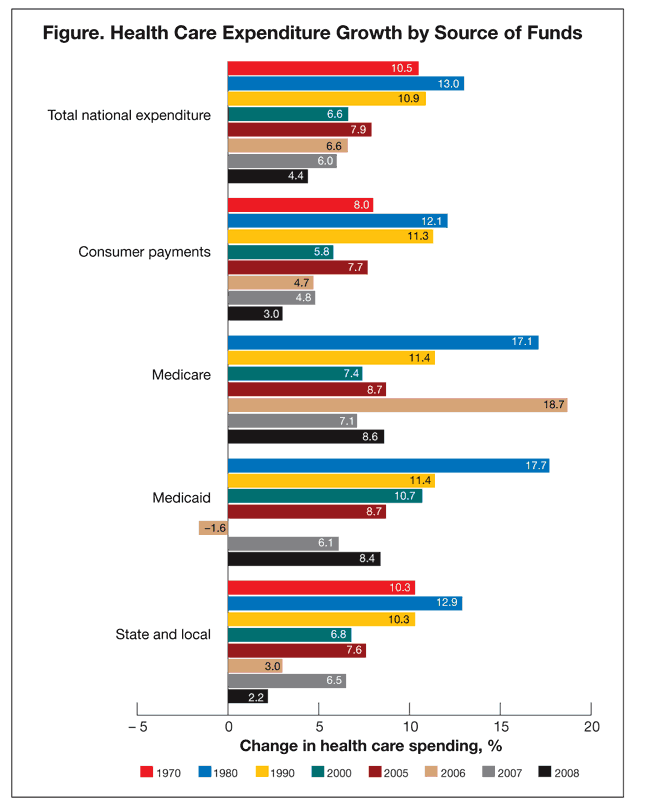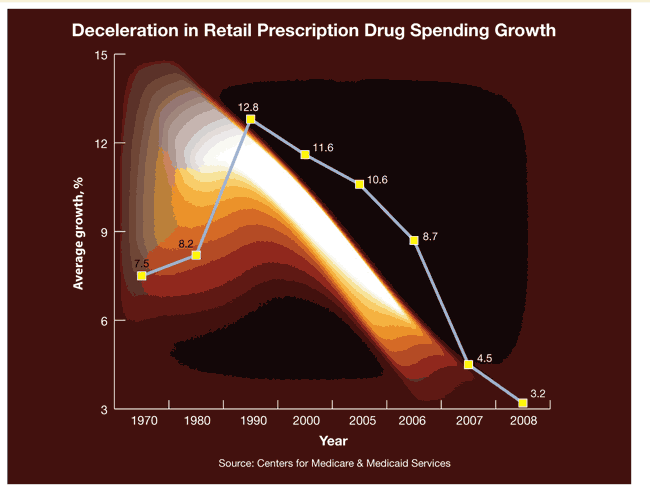- Clinical Technology
- Adult Immunization
- Hepatology
- Pediatric Immunization
- Screening
- Psychiatry
- Allergy
- Women's Health
- Cardiology
- Pediatrics
- Dermatology
- Endocrinology
- Pain Management
- Gastroenterology
- Infectious Disease
- Obesity Medicine
- Rheumatology
- Nephrology
- Neurology
- Pulmonology
Health care spending Continues to Slow
Health care spending in the United States slowed to a growth rate of 4.4% in 2008-the slowest in 48 years-as national health spending reached $2.3 trillion ($7681 per person). These results were published in an annual report from the National Health Expenditure Accounts Team.1
Health care spending in the United States slowed to a growth rate of 4.4% in 2008-the slowest in 48 years-as national health spending reached $2.3 trillion ($7681 per person). These results were published in an annual report from the National Health Expenditure Accounts Team.1

The recession has led to a slowdown in health spending across all major personal health care services, according to the study authors. But while growth in private, state, and local spending slowed, federal health spending accelerated (Figure at left).
The American Reinvestment and Recovery Act pushed the share of federally funded health spending to almost 36%, compared with 28% in 2007. Total Medicaid spending climbed by 8.4% in 2008, an increase from 6.1% in 2007. And total Medicare spending grew by 8.6%, to $469.2 million in 2008, an increase from 7.1% in 2007.
Although prescription drug use among the overall population declined, use among Medicare Part D enrollees increased in 2008. Spending on Part D benefits grew by 12.2%.
Reduction in Prescription Drug Use
Adjusted personal income grew by only 2.7% in 2008, but household spending on health care grew by 4.3%. This is a notable deceleration in household spending on health care, from 5.9% growth in 2007.

Along with the recession, a low number of new product introductions as well as safety concerns all contributed to lower use of prescription drugs per person, reported the authors. The growth of retail prescription drug spending slowed to 3.2% in 2008, a continuation of a slowing trend that began in 2000 (Figure at left).
Prescription drug prices climbed by only 2.5% in 2008. This remains below recent rates averaging 4.1% from 1997 to 2007.
On a brighter note, growth in spending on durable medical equipment actually increased, accelerating to 4.1% in 2008, from 3.3% in 2007.
References:
Reference
1. Hartman M, Martin A, Nuccio O, Catlin A; National Health Expenditure Accounts Team. Health spending growth at a historic low in 2008. Health Aff (Millwood). 2010;29:147-155.
